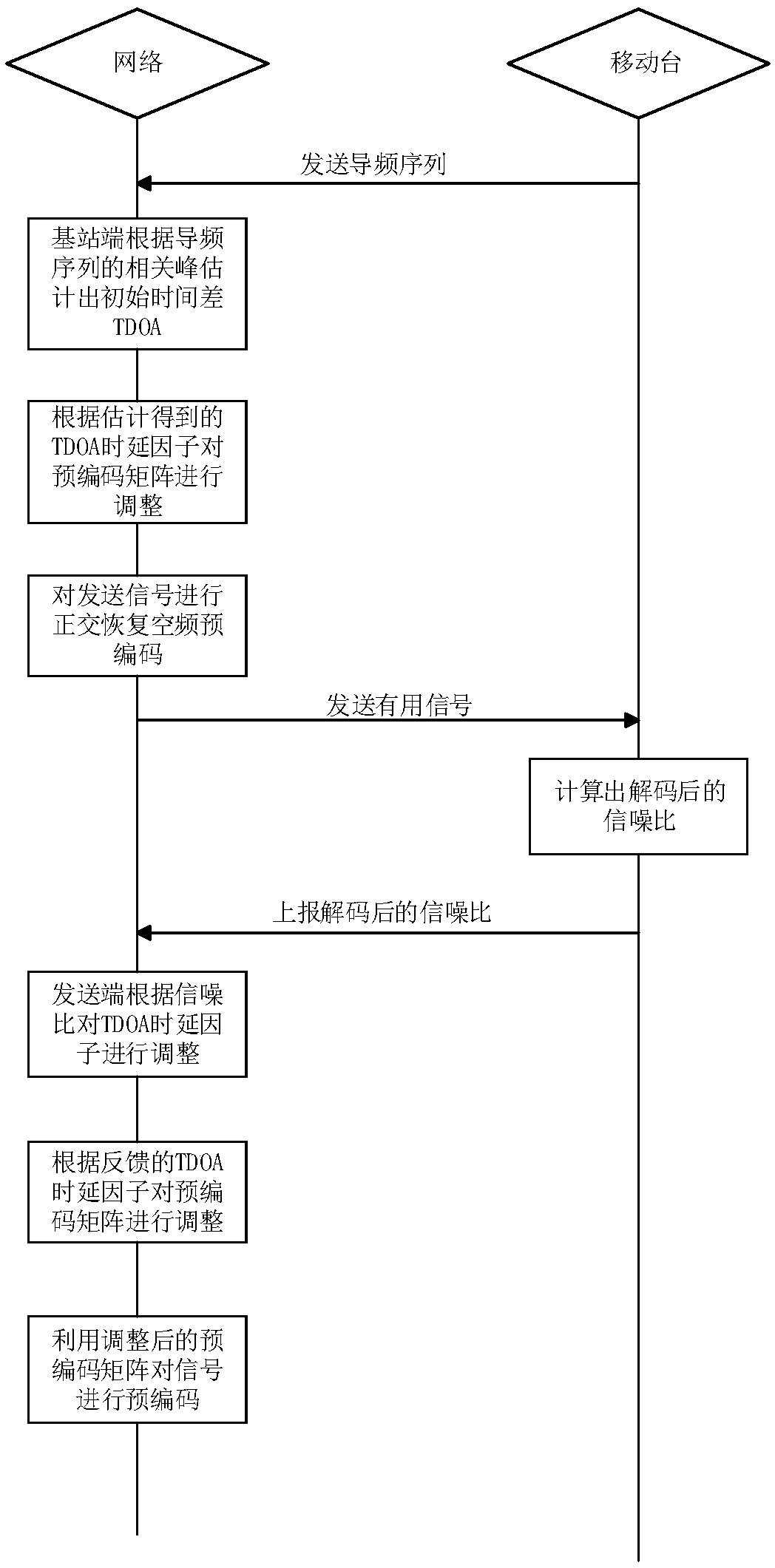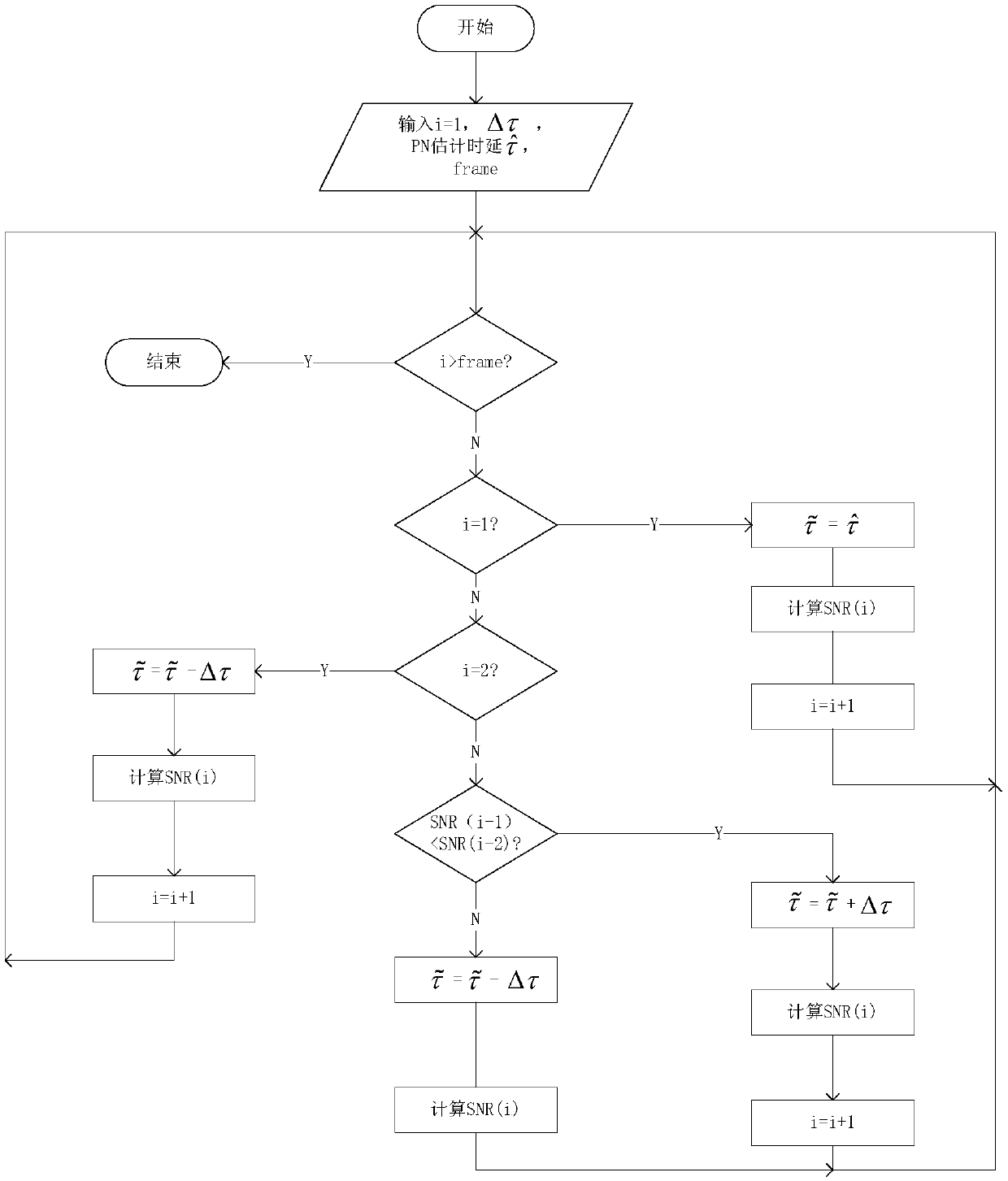Self-adaptive orthogonal recovery coding method based on signal-to-noise ratio estimation
A technology for signal-to-noise ratio estimation and coding method, which is applied in channel estimation, pilot signal allocation, baseband system components, etc. question
- Summary
- Abstract
- Description
- Claims
- Application Information
AI Technical Summary
Problems solved by technology
Method used
Image
Examples
Embodiment Construction
[0046] The following specific implementation is a further description of the method and technical solution provided by the present invention, but should not be understood as a limitation of the invention.
[0047] Such as figure 1 As shown, the adaptive orthogonal recovery coding method based on signal-to-noise ratio estimation of the present invention includes the following steps:
[0048] Step 1: The base station pre-estimates the time difference of arrival TDOA delay factor of signals received by different antennas according to the pilot sequence sent by the mobile station, that is,
[0049]
[0050]
[0051]
[0052] where D f ,D s are the pilot sequences received by the first base station and the second base station respectively, D r is the transmitted local pilot sequence, N is the length of the pilot sequence, is the estimated time difference TDOA.
[0053] Step 2: The base station uses the estimated TDOA delay factor The phase rotation of the elements...
PUM
 Login to View More
Login to View More Abstract
Description
Claims
Application Information
 Login to View More
Login to View More - R&D
- Intellectual Property
- Life Sciences
- Materials
- Tech Scout
- Unparalleled Data Quality
- Higher Quality Content
- 60% Fewer Hallucinations
Browse by: Latest US Patents, China's latest patents, Technical Efficacy Thesaurus, Application Domain, Technology Topic, Popular Technical Reports.
© 2025 PatSnap. All rights reserved.Legal|Privacy policy|Modern Slavery Act Transparency Statement|Sitemap|About US| Contact US: help@patsnap.com



